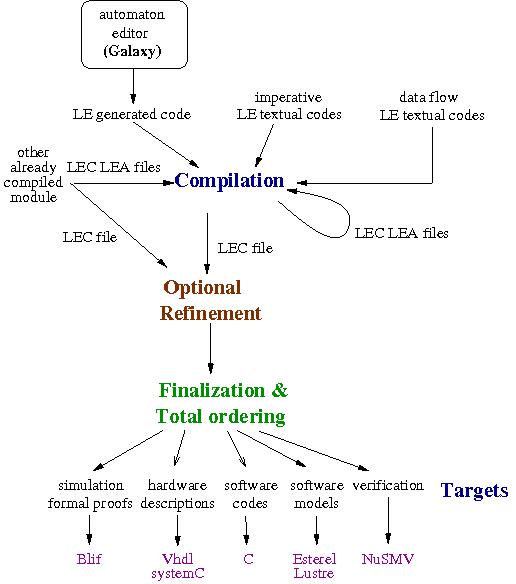Section: New Results
The Clem Workflow
Participants : Annie Ressouche, Daniel Gaffé, Imane Khalis.
Keywords: Synchronous languages, Synchronous Modeling, Model checking, Mealy machine.
This research axis concerns the theoretical study of a synchronous language le –with modular compilation– and the development of a toolkit (see Figure 26 ) around the language to design, simulate, verify, and generate code for programs. The novelty of the approach is the ability to manage both modularity and causality.
This year, we continued to focus on the improvement of both le language and compiler concerning data handling and the generation of back-ends, required by other research axis of the team (see 7.21 and 7.23 ). We also improved the design of a new simulator for le programs which integrates our new approach. In clem we generate an independent intermediate code (lec ) before specific target generations. This code represents the semantics of programs with 4-valued equation systems. In our design flow, we need to simulate programs at this level. Last year, we begun to develop such a simulator in order to integrate the data part of the language. The simulator GUI has been designed in Qt and the simulator takes into account the values carried by signals. This year, during her internship, Imane Khalis has completed the simulator to allow an external computation of data values and a communication with the simulator through a socket mechanism. With this last development, the lec simulator is complete and is integrated in the clem toolkit.


